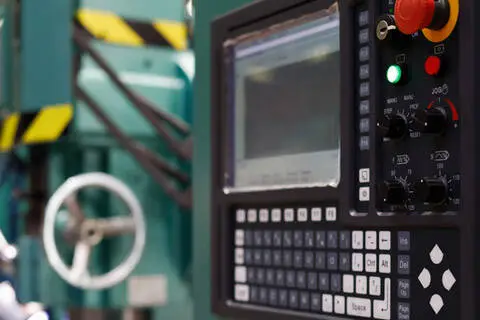
Control Center Ergonomics Standards

Control centres ergonomics standards describe ergonomic principles, recommendations and requirements to be applied in the design of control centres, as well as in the expansion, refurbishment and technological upgrades of control centres. It covers all types of control centres. These standards would find application in process industries, transportation and logistic control systems and people deployment services. Standards in this group cover ergonomic design principles for the various arrangements of rooms and spaces in a control suite. They cover layout and design of workstations and environmental aspects of ergonomic design: thermal environment (temperate regions); air quality; lighting environment; acoustic environment; vibration; aesthetics and interior design.
ISO 11064-1:2000
Ergonomic design of control centres -- Part 1: Principles for the design of control centres
This part of ISO 11064 specifies ergonomic principles, recommendations and requirements to be applied in the design of control centres, as well as in the expansion, refurbishment and technological upgrades of control centres. It covers all types of control centres typically employed for process industries, transportation and logistic control systems and people deployment services. Although this part of ISO 11064 is primarily intended for non-mobile control centres, many of the principles specified in this document could be applicable to mobile control centres, such as those found on ships and aircraft.

ISO 11064-2:2000
Ergonomic design of control centres -- Part 2: Principles for the arrangement of control suites
This part of ISO 11064 covers ergonomic design principles for control centres and, more specifically, the various arrangements of rooms and spaces in a control suite. The principles are based on an analysis of functions and tasks that have to be supported by the control room and functionally-related rooms. They include identifying functional areas, estimating the space provisions for each functional area, determining operational links between functional areas and developing preliminary layouts for the control suite to facilitate the transition between all the activities conducted in the control suite.

ISO 11064-3:1999
Ergonomic design of control centres -- Part 3: Control room layout
This part of ISO 11064 establishes ergonomic principles for the layout of control rooms. It includes requirements, recommendations and guidelines on control room layouts, workstation arrangements, the use of off-workstation visual displays and control room maintenance. It covers all types of control centres, including those for the process industry, transport and dispatching systems in the emergency services. Although this part of ISO 11064 is primarily intended for non-mobile control centres, many of the principles could be relevant/applicable to mobile centres, such as those found on ships and aircraft.

ISO 11064-4:2013
Ergonomic design of control centres - Part 4: Layout and dimensions of workstations
ISO 11064-4:2013 specifies ergonomic principles, recommendations and requirements for the design of workstations found in control centres. It covers control workstation design with particular emphasis on layout and dimensions. It is applicable primarily to seated, visual-display-based workstations, although control workstations at which operators stand are also addressed. These different types of control workstation are to be found in applications such as transportation control, process control and security installations. Most of these workstations now incorporate flat-display screens for the presentation of information.

ISO 11064-5:2008
Ergonomic design of control centres - Part 5: Displays and controls
ISO 11064-5:2008 presents principles and gives requirements and recommendations for displays, controls, and their interaction, in the design of control-centre hardware and software.
ISO 11064-6:2005
Ergonomic design of control centres - Part 6: Environmental requirements for control centres
ISO 11064-6:2005 gives environmental requirements as well as recommendations for the ergonomic design, upgrading or refurbishment of control rooms and other functional areas within the control suite. The following aspects are covered: thermal environment (temperate regions); air quality; lighting environment; acoustic environment; vibration; aesthetics and interior design. It is applicable to all types of control centres, including those for the process industry, transport and dispatching systems and emergency services. Although it is primarily intended for non-mobile control centres, many of the principles are relevant to mobile centres such as those found on ships, locomotives and aircraft. It does not cover the influence of electromagnetic fields.

ISO 11064-7:2006
Ergonomic design of control centres - Part 7: Principles for the evaluation of control centres
ISO 11064-7:2006 establishes ergonomic principles for the evaluation of control centres. It gives requirements, recommendations and guidelines on evaluation of the different elements of the control centre, i.e. control suite, control room, workstations, displays and controls, and work environment. It covers all types of control centres, including those for the process industry, transport systems and dispatching rooms in the emergency services. Although ISO 11064-7:2006 is primarily intended for non-mobile control centres, many of the principles could be relevant/applicable to mobile centres, such as those found on ships and aircraft.

